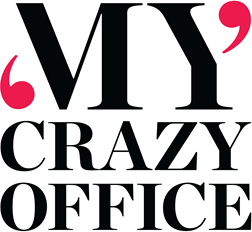 In just a matter of days, the coronavirus pushed people inside their homes, accelerating a digital transformation around the world.
In just a matter of days, the coronavirus pushed people inside their homes, accelerating a digital transformation around the world.
Getting workers out of their homes and back into offices is going to prove harder. According to a new survey by researchers at India-based workplace services firm Ionotrics and San Diego–based Global Workplace Analytics:
77 percent of the workforce wants to continue to work from home at least part of the time once the pandemic is over. That’s up from 60 percent one month ago. That’s a 132 percent increase from before the coronavirus crisis, according to the Work-from-Home Experience Survey in which more than 2,600 employees from around the world participated.
As the country is opening up, employees are faced with a decision – do they go back to the office or not? Many of my clients are telling me that members of their staff are fearful about returning. Compassion still reigns. You may have to consider each person, and the factors that they are grappling with. If you have a staff member who fits into any of the following categories, their return will most likely be delayed:
- They have kids at home who need home schooling
- They have underlying health concerns
- They are over the age of 60
- They live in a metro city and use public transportation
In some states, employees who fit into one of these categories may qualify for unemployment – if they must return to the office and are not able to. Other employees most likely need reassurance and to be listened to. It’s important to calm nerves and listen to staff concerns. Here are some guiding principles:
- Ask your staff what they need in order to return to the office safely.
- Plan and communicate how you are preparing the office for their return
- Cleaning – Describe your ongoing plan for keeping the office clean from Covid 19
- Spacing – Follow the CDC’s guidelines for distance in the office
- Wearing facemasks and gloves – Will you be supplying them or do they need to bring their own?
- Rotating schedules – 2 days in, 2 days at home. Think low capacity
commuting before or after rush hours.
-
- Change in dress code – I’m going to predict that the workplace is about to get really casual
Coming out of the cave after a long winter, a bear needs time to acclimate. You may want to start with visiting the office ahead of opening, and encouraging your staff to do the same. Then try two days the first week and see how it goes.
- Offer emotional support if possible.
Professional coaches, therapists and clergy can talk to your staff about their mental health. It will pay off in the long run.
- Be transparent about possible layoffs, furloughs or job eliminations. No surprises please, let them prepare.
- Have real communication about diversity.
Create guidelines for behavior in these conversations, and have a moderator who keeps the conversation constructive. Offer books and movies as resources. Have conversations that allow staff to express their fear, pain, and anger. This kind of sharing can be extremely emotional, so make sure you to have professional support around it.
- Practice People Over Profit
Sure, we are working to earn money, and companies must be profitable to hire people, and I know that in some industries robots will replace people. Given this reality, how can you make the workplace a desirable and safe place so that people want to work for you?
Please let us know how the transition back to the office works for you and your company.
Kathi Elster – Executive Coach and co-owner of K Squared Enterprises.
Contact us at info@mycrazyoffice.co for any further help around this topic.

 In just a matter of days, the coronavirus pushed people inside their homes, accelerating a digital transformation around the world.
In just a matter of days, the coronavirus pushed people inside their homes, accelerating a digital transformation around the world. You may be the leader of a large organization, the executive director of a nonprofit, the manager of a team, the owner of a business with a few staff, or the sole proprietor of a small business.
You may be the leader of a large organization, the executive director of a nonprofit, the manager of a team, the owner of a business with a few staff, or the sole proprietor of a small business.

Looking to advertise with us?
We have sponsorships available on the My Crazy Office Podcast.
Please email us at info@mycrazyoffice.co.